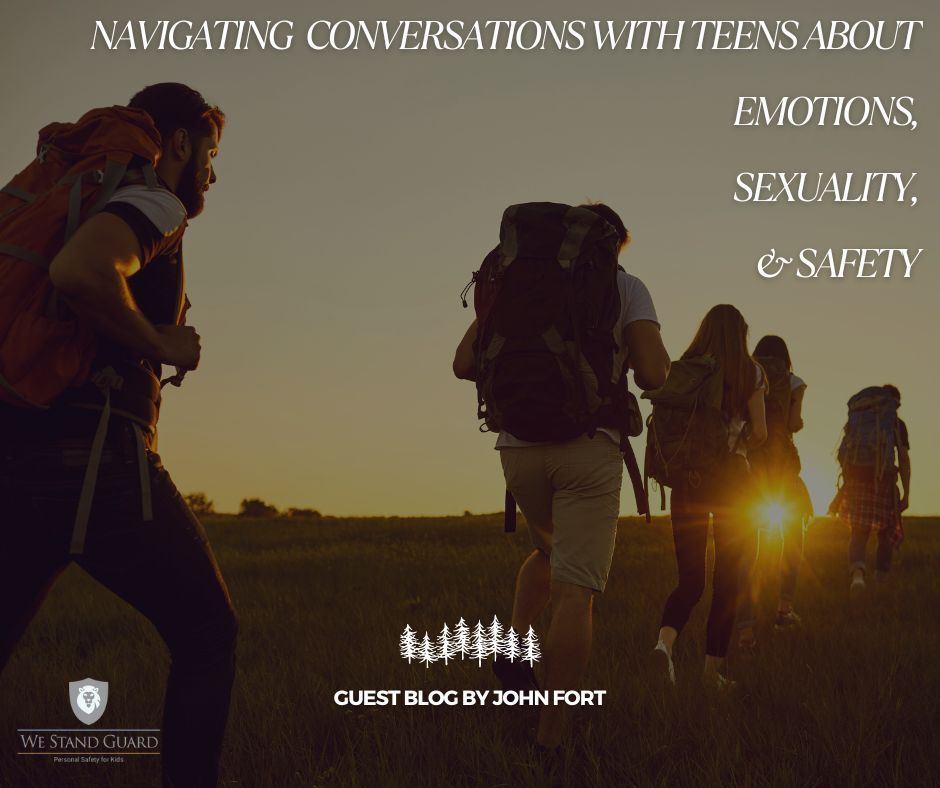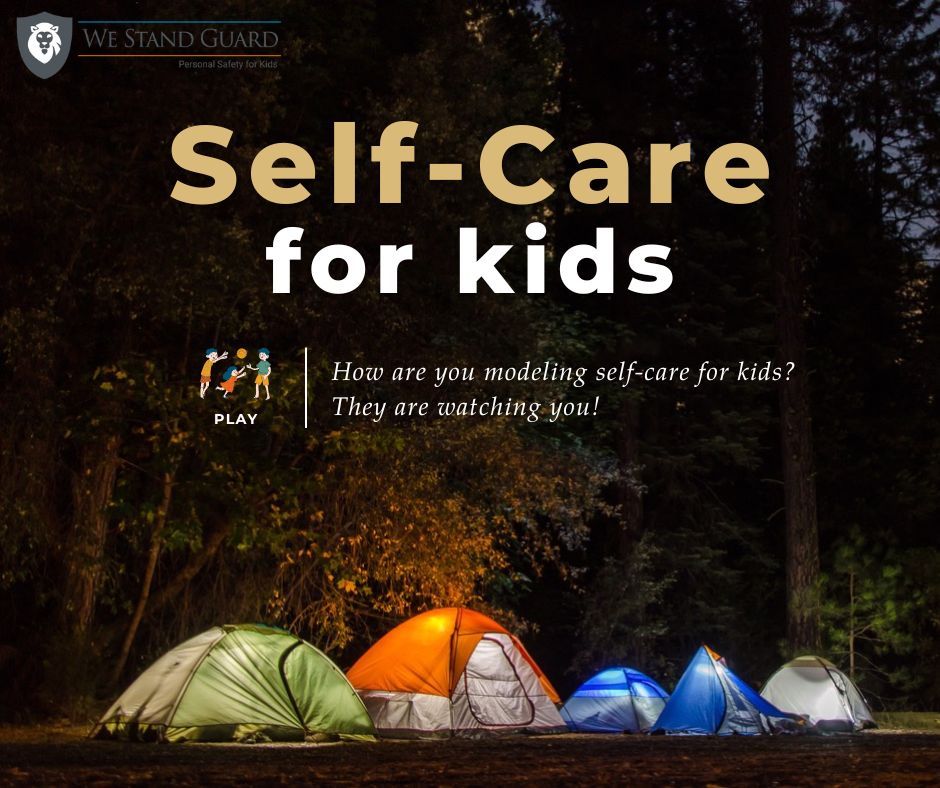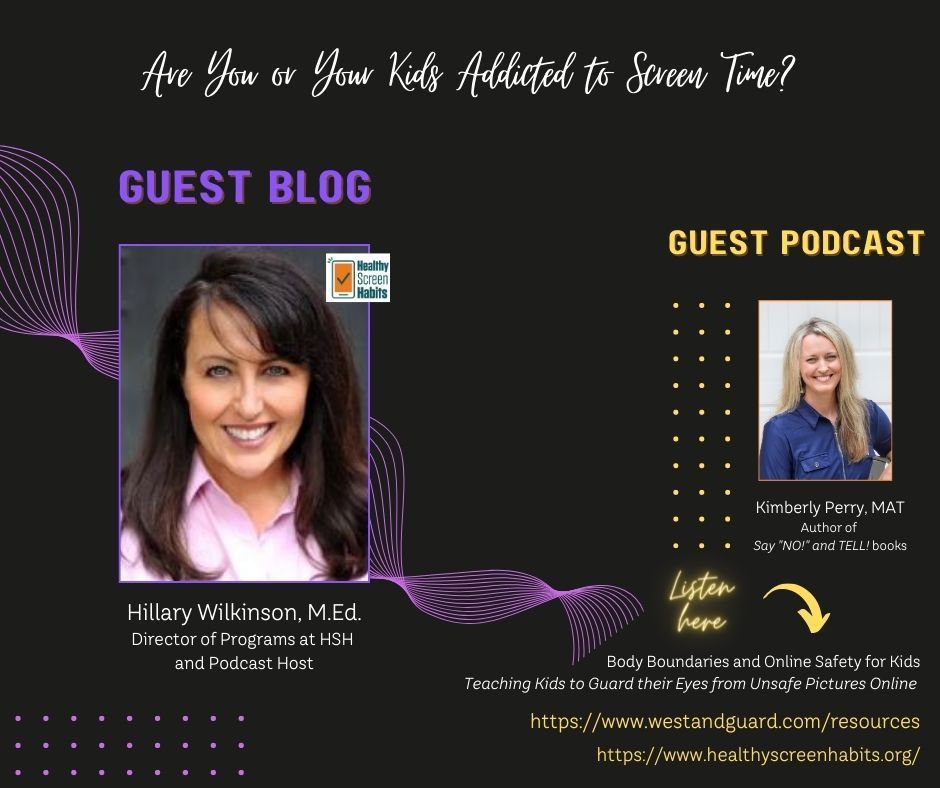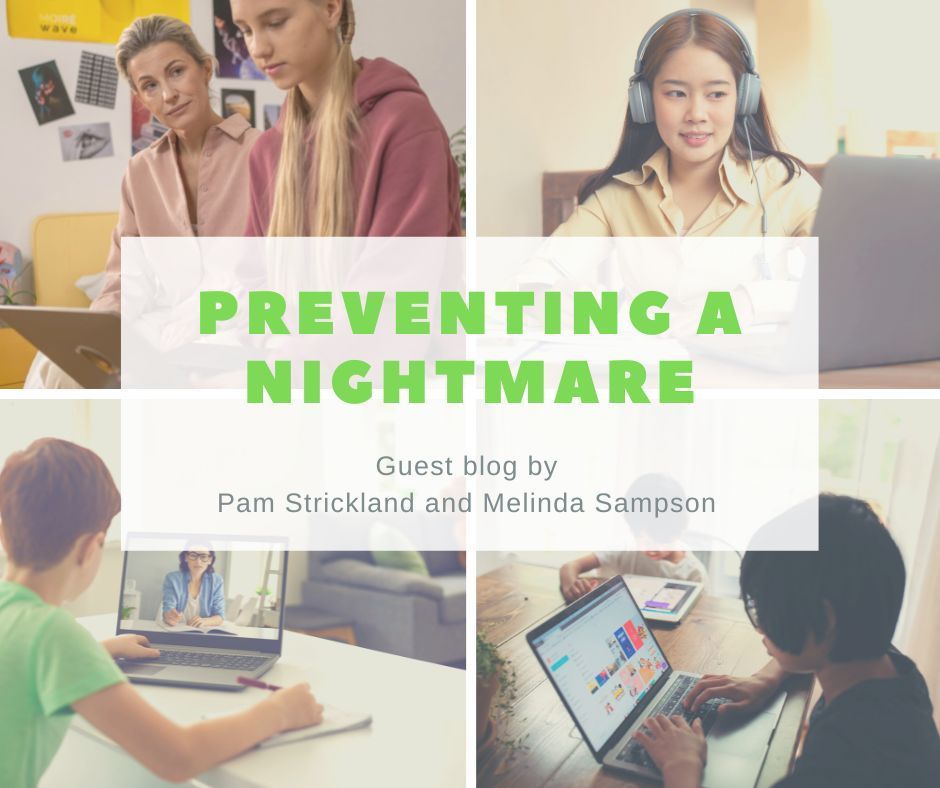How Can a Big Problem - Kids Abusing Kids - Include a Simple Solution?
Kimberly Perry • March 22, 2019
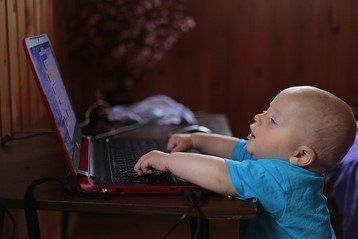
Caption:
Did you know that 1/3 of all Internet traffic is pornography? And, 90% of pornography includes aggression and violence. Plus, the global conglomerate of pornographers targets kids, since they know it is addictive, which makes them a multi-billion dollar industry.
What is your plan to protect the kids and teens you love from seeing pornography (which is child sexual abuse)
and preserve the innocence of generations to come?
- - Therapy is good, but prevention is better (Dr. Layden) --
PSB Among Kids is on the Rise - How Can This Be?
Have you ever had to face a problem that seemed insurmountable? Well, you are not alone. Dealing with the joys and difficulties of day to day living can be challenging enough without additional big problems to tackle, such as Problematic Sexual Behavior (PSB) among our youth - kids and teens abusing kids. As we see the direction our hyper-sexualized culture is heading, my heart aches for the children to know there is a different way - a better way of saying "NO!" to the false messages and pressures from all forms of pornified media, which can groom kids for being sexually abused or abusing others.
PSB is on the rise among kids. A big contributing problem is the increase of kids being exposed to pornography, which is traumatizing and a form of child sexual abuse. Today's pornography is not only pictures of "naked ladies," but is mostly hard core pornography with 90% containing aggression and violence. Once kids are exposed, some of the those hurting and traumatized kids act out the pornography by abusing and hurting other kids.
I just returned from a two day trip to Washington DC to host a Say NO! and TELL! book booth at the National Center on Sexual Exploitation (NCOSE) Symposium which addressed child on child harmful sexual behavior. I met amazing parents and professionals seeking to understand this unfathomable trend, as well as discuss real solutions to help prevent child sexual abuse, but also stop kids from abusing other kids. Nearly 100% of the speakers emphasized that PREVENTION is KEY, including the importance of protective factors! Setting all politics aside, amidst #MeToo, our nation is seeing intervention and recovery for victims, which is a powerful movement for healing. However, NOW is the time to ALSO champion PREVENTION so we can stop the abuse cycle! One key takeaway I learned was that kids who abuse other kids have often been sexually abused themselves, although a kid that was sexually abused does not automatically abuse others (not a causation). Here are some other things I learned:
According to Jane Silovsky, Ph.D., typical sexual development for youth exists on a continuum - normal, concerning, problematic and harmful. Sexual behaviors in youth can become problematic when there is a difference in power and control, increased focus and frequency, intrusive, forceful, and fear. PSB is not a clinical diagnosis, but shows clinically concerning behaviors. Youth are vulnerable to pornography since 1/3 of the Internet traffic is pornography. Prevention includes building the protective factors, education, addressing the youth's trauma and treating pornography use with a multi-disciplinary team approach including child and parents.
According to Gail Dines, Ph.D., kids today are image based, whereas when we grew up, life was print based. Internet porn is changing kids brains (addiction skips the frontal lobe decision making part) as well as teens' views on sex. We have an entire generation of boys and girls being traumatized and sexually abused by seeing porn (not a matter of if, but when a child will see porn). One porn producer said, "girls [porn performers] come to the set porn-ready." Gail interviewed child rapists and found that the average time to rape an actual child is 6 months from the time of downloading child porn. They said they actually prefer adult partners, but were just bored with that. And, they confessed that the culture did a lot of the grooming for them because of our "perp culture." The porn industry works like a Fortune 500 company and has a sophisticated business plan. In fact, Mind Geek, a multi-billion dollar company or the "Amazon of porn," controls 80 to 90% of the porn world-wide (e.g. Porn Hug website). - - A great concern is how to close the Parental Naivete Gap! - -
According to May Anne Layden, Ph.D., hurt children can hurt other children. The PTSD from sexual abuse and assault can be as great or more as trauma from war. Sibling abuse happens 2 to 5 x more than father - daughter incest. Kids often learn how to abuse from seeing porn or being abused themselves - both of which is child sexual abuse. It is rare that kids are deviant, but rather need to enhance the positive protective factors so they heal and learn healthy ways of connecting and relating to help restore their youth. Today, there is almost universal exposure to porn for kids with "pornified learning" because the brain learns best with pictures, rewards, role models and anonymity. Internet porn is full of lies, mis-education and is pathological including 90% aggression and violence in content. Male abusers often believe that women's bodies are sexual entertainment for men. One of the greatest lies is the "permission giving beliefs" that porn is normal. Therapy is good, but prevention is better!
Here is a link to the actual speakers at the NCOSE Symposium for FREE!
WARNING - PLEASE BE ADVISED THAT ALL PRESENTATIONS CONTAIN HIGHLY SENSITIVE INFORMATION. ALSO, SPEAKER GAIL DINES FREQUENTLY USES INTENSE LANGUAGE WITH GRAPHIC DESCRIPTIONS throughout her presentation so please proceed with caution:
Website: https://endsexualexploitation.org/cocsa/
Or Vimeo: https://vimeo.com/325635930
Keeping it Simple
So often, amidst these challenges of combating evil and healing our brokenness as a culture, we long for peace...and peace of mind, no matter what our age and stage in life. One easy way to have greater peace of mind is to do something very simple and make a difference- give away or read a Say "NO!" and TELL! book with a child and spread the prevention message. When you share a Say "NO!" and TELL! book, you can help protect an entire family for generations to come! Here are some examples of others spreading the prevention message:
*My new friend, influencer and mom, Brittany, shared a post on Instagram, reading a Say 'NO!" and TELL! book with her young daughter, Selah.
Have you ever had to face a problem that seemed insurmountable? Well, you are not alone. Dealing with the joys and difficulties of day to day living can be challenging enough without additional big problems to tackle, such as Problematic Sexual Behavior (PSB) among our youth - kids and teens abusing kids. As we see the direction our hyper-sexualized culture is heading, my heart aches for the children to know there is a different way - a better way of saying "NO!" to the false messages and pressures from all forms of pornified media, which can groom kids for being sexually abused or abusing others.
PSB is on the rise among kids. A big contributing problem is the increase of kids being exposed to pornography, which is traumatizing and a form of child sexual abuse. Today's pornography is not only pictures of "naked ladies," but is mostly hard core pornography with 90% containing aggression and violence. Once kids are exposed, some of the those hurting and traumatized kids act out the pornography by abusing and hurting other kids.
I just returned from a two day trip to Washington DC to host a Say NO! and TELL! book booth at the National Center on Sexual Exploitation (NCOSE) Symposium which addressed child on child harmful sexual behavior. I met amazing parents and professionals seeking to understand this unfathomable trend, as well as discuss real solutions to help prevent child sexual abuse, but also stop kids from abusing other kids. Nearly 100% of the speakers emphasized that PREVENTION is KEY, including the importance of protective factors! Setting all politics aside, amidst #MeToo, our nation is seeing intervention and recovery for victims, which is a powerful movement for healing. However, NOW is the time to ALSO champion PREVENTION so we can stop the abuse cycle! One key takeaway I learned was that kids who abuse other kids have often been sexually abused themselves, although a kid that was sexually abused does not automatically abuse others (not a causation). Here are some other things I learned:
According to Jane Silovsky, Ph.D., typical sexual development for youth exists on a continuum - normal, concerning, problematic and harmful. Sexual behaviors in youth can become problematic when there is a difference in power and control, increased focus and frequency, intrusive, forceful, and fear. PSB is not a clinical diagnosis, but shows clinically concerning behaviors. Youth are vulnerable to pornography since 1/3 of the Internet traffic is pornography. Prevention includes building the protective factors, education, addressing the youth's trauma and treating pornography use with a multi-disciplinary team approach including child and parents.
According to Gail Dines, Ph.D., kids today are image based, whereas when we grew up, life was print based. Internet porn is changing kids brains (addiction skips the frontal lobe decision making part) as well as teens' views on sex. We have an entire generation of boys and girls being traumatized and sexually abused by seeing porn (not a matter of if, but when a child will see porn). One porn producer said, "girls [porn performers] come to the set porn-ready." Gail interviewed child rapists and found that the average time to rape an actual child is 6 months from the time of downloading child porn. They said they actually prefer adult partners, but were just bored with that. And, they confessed that the culture did a lot of the grooming for them because of our "perp culture." The porn industry works like a Fortune 500 company and has a sophisticated business plan. In fact, Mind Geek, a multi-billion dollar company or the "Amazon of porn," controls 80 to 90% of the porn world-wide (e.g. Porn Hug website). - - A great concern is how to close the Parental Naivete Gap! - -
According to May Anne Layden, Ph.D., hurt children can hurt other children. The PTSD from sexual abuse and assault can be as great or more as trauma from war. Sibling abuse happens 2 to 5 x more than father - daughter incest. Kids often learn how to abuse from seeing porn or being abused themselves - both of which is child sexual abuse. It is rare that kids are deviant, but rather need to enhance the positive protective factors so they heal and learn healthy ways of connecting and relating to help restore their youth. Today, there is almost universal exposure to porn for kids with "pornified learning" because the brain learns best with pictures, rewards, role models and anonymity. Internet porn is full of lies, mis-education and is pathological including 90% aggression and violence in content. Male abusers often believe that women's bodies are sexual entertainment for men. One of the greatest lies is the "permission giving beliefs" that porn is normal. Therapy is good, but prevention is better!
Here is a link to the actual speakers at the NCOSE Symposium for FREE!
WARNING - PLEASE BE ADVISED THAT ALL PRESENTATIONS CONTAIN HIGHLY SENSITIVE INFORMATION. ALSO, SPEAKER GAIL DINES FREQUENTLY USES INTENSE LANGUAGE WITH GRAPHIC DESCRIPTIONS throughout her presentation so please proceed with caution:
Website: https://endsexualexploitation.org/cocsa/
Or Vimeo: https://vimeo.com/325635930
Keeping it Simple
So often, amidst these challenges of combating evil and healing our brokenness as a culture, we long for peace...and peace of mind, no matter what our age and stage in life. One easy way to have greater peace of mind is to do something very simple and make a difference- give away or read a Say "NO!" and TELL! book with a child and spread the prevention message. When you share a Say "NO!" and TELL! book, you can help protect an entire family for generations to come! Here are some examples of others spreading the prevention message:
*My new friend, influencer and mom, Brittany, shared a post on Instagram, reading a Say 'NO!" and TELL! book with her young daughter, Selah.
* My friend, Susan, shared a post on her Instagram
and helped over 1000 of her followers learn about prevention!
* My mother-in-law buys the books in bulk and gives them as baby shower gifts.
*My friend, DiAne, buys the books in bulk and shares them with families she meets through church and the chiropractor office where she works.
* My mother-in-law buys the books in bulk and gives them as baby shower gifts.
*My friend, DiAne, buys the books in bulk and shares them with families she meets through church and the chiropractor office where she works.
* My mom and dad buy the books in bulk and share them through my dad's dental practice.
* Others I know from going to conferences (the aforementioned plus) in the "prevention movement" have collected bulk post cards or flyers about the Say "NO!" and TELL!
books so they can pass them out at their speaking engagements.
*Personally, I carry the Say "NO!" and TELL! post cards in my purse and whenever I see parents with a child, I give them one. In fact, this past Halloween, I stood outside our neighborhood's club house for several hours passing out these post cards; I was pleasantly surprised that most every parent was truly grateful that I shared a way to protect their kids with them.
Beyond family and friends, we also have new partners sharing the Say "NO!" and TELL! books! Be Broken , Crossroads Fellowship , Enough is Enough and Wake County Network of Care have all added the Say "NO!" and TELL! books to their websites. And, there are more partners to come soon...Josh McDowell Ministries, National Center on Sexual Exploitation, Stop Trafficking Project, USIAHT, National Decency Coalition, Engage Together, and White Ribbon Week Against Pornography will be adding the Say "NO!" and TELL! books as a prevention resource as well!
*Personally, I carry the Say "NO!" and TELL! post cards in my purse and whenever I see parents with a child, I give them one. In fact, this past Halloween, I stood outside our neighborhood's club house for several hours passing out these post cards; I was pleasantly surprised that most every parent was truly grateful that I shared a way to protect their kids with them.
Beyond family and friends, we also have new partners sharing the Say "NO!" and TELL! books! Be Broken , Crossroads Fellowship , Enough is Enough and Wake County Network of Care have all added the Say "NO!" and TELL! books to their websites. And, there are more partners to come soon...Josh McDowell Ministries, National Center on Sexual Exploitation, Stop Trafficking Project, USIAHT, National Decency Coalition, Engage Together, and White Ribbon Week Against Pornography will be adding the Say "NO!" and TELL! books as a prevention resource as well!
A Simple, Yet Significant Solution
"Often the biggest problems can have a simple solution" (Cheryl Scanlan, Founder of Promised Land Living) . The problems of PSB, child sexual abuse, pornography, sex trafficking, etc. are massive, complex and very real - an imminent threat worldwide (as well as in our own backyard, the United States) to humankind at this point in history. And yet, one simple and SIGNIFICANT solution is to go on the offensive TOGETHER and empower kids by teaching boundaries and personal safety with a Say "NO!" and TELL! book. We can help protect the next family forever... for the good. Let's get the conversation of HOPE started today! I know I gain hope and strength from all of you - the We Stand Guard Army - as we link arms together to protect kids! Dr. Layden said it best, "therapy is good, but prevention is better!"
Personal Reflection: What is one big problem in your own life that may have a simple solution? Have you asked God to show you the way?
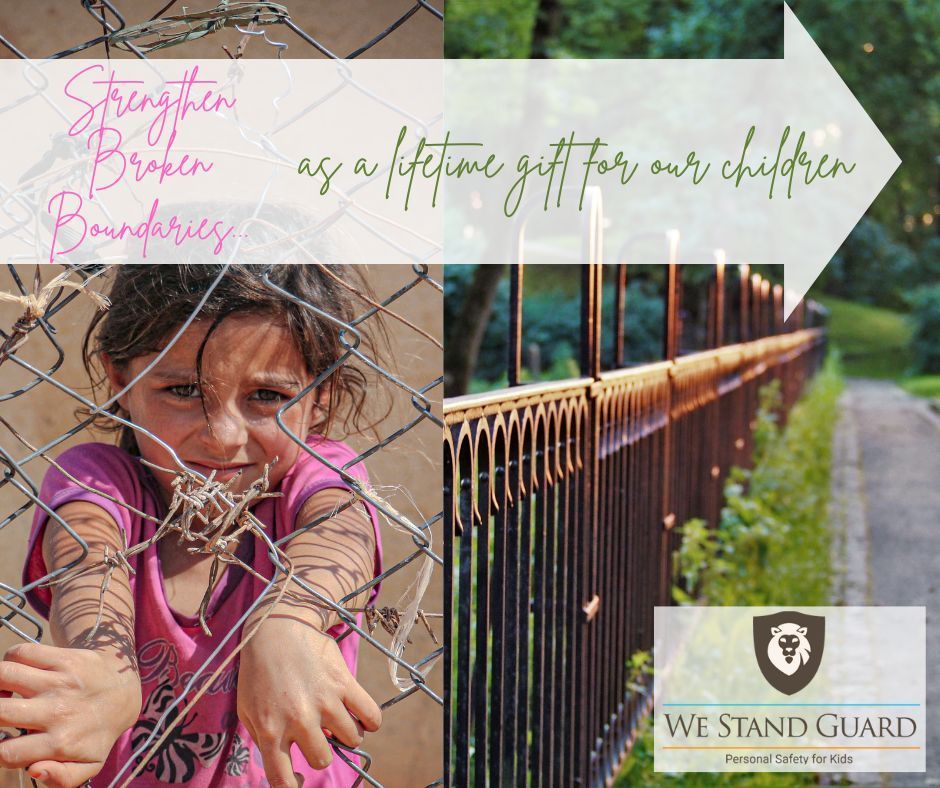
Has Someone Crossed the Line? Have you crossed someone's boundaries? Clarifying and maintaining boundaries is a lifelong practice and skill for all ages, especially today in our tech world. My friend Barb Winters has written a thought-provoking guest blog so we can "let it begin with me" by reflecting on our own boundaries day to day. Plus she relates boundaries in a relevant way to our culture by connecting to tech and our youth. A Refresh on Boundaries for All Ages Today In a world of child sexual abuse material (CSAM), pornography, hookup culture, and predators, understanding why boundaries are important is paramount. The following is an excerpt from Barb Winters’ book, Sexpectations: Helping the Next Generation Navigate Healthy Relationships . I ruffled my son’s hair. “Good job.” He had finished his science project and was walking it to the living room to show his dad. “You messed up my hair.” He appeared less than thrilled. “But it’s so soft,” I said playfully. “Mom, stop. I don’t like when you get in my space.” I paused. I guess he was growing up and no longer appreciated his mommy touching him without permission. “Sorry. I’ll try to be more respectful.” I can’t boast that I’ve always heard my children’s requests or taken them seriously. I also can’t promise I never ruffled my son’s hair again—I may have slipped once or twice. But as I mature, I’m learning to listen to others when they attempt to communicate their boundaries. Teaching Teens When teaching preteens and teens at local schools, we emphasize the importance of setting and communicating boundaries. A healthy person institutes boundaries. Healthy relationships incorporate boundaries. A boundary is a limit. It’s a border, an invisible line drawn to express parameters—what we deem as acceptable and unacceptable in various areas of life. Think of a fence or lines on a road. The lines mark the area where it’s safe to drive. If we veer over the line, we’re in danger of hitting an oncoming car or going into a ditch. I like boundaries. I find them comforting. Not everyone appreciates limitations and rules, but I feel safer knowing them and staying within their confines. I’d much rather my son tell me not to touch his hair, even though this signal that he was growing up saddened me, than for him to resent me because I crossed a boundary I didn’t know existed. Our goal as caregivers is to help our children (1) comprehend why they need boundaries (2) recognize which areas of life need boundaries (3) set their boundaries (4) communicate their boundaries to others Boundaries protect us. Many people rebel against rules and regulations. Society conditions us to resist guidelines and directives, as if those “other people” are trying to control, manipulate, and reign over us. Hormonal teens, trying to find their place in the world and testing their limits, can adopt this stance. Our objective is to turn this thinking around so they view boundaries as friendly and an essential component of life. When I tell teens we turn off the Wi-Fi every night at 11:00 p.m. in our household, they look at me as if I’ve lost my mind and ruined my children for life. But I purposefully mention this line to reveal this fact: because I love my children, I want to safeguard them. My job is to protect them from predators and help them resist temptation late at night. I am relieving them of the burden of saying no to pornography, late-night gaming, and social media drama—and improving their ability to say yes to a good night’s sleep and a well-rested body. A Universal Human Need for Boundaries Boundaries are necessary in multiple areas of life. We set our alarms. We create budgets. We watch our caloric intake. We limit our interactions with people who push our buttons. And we obey traffic signals. These are all boundaries—ones we’ve set for ourselves and ones established by others. To some extent, these lines exist in all areas of life, but let’s look at some specific areas that benefit relationships. We want the next generation to set these boundaries as soon as possible, before it’s necessary to exercise them. In the physical area, within a romantic relationship, help your children establish how far they will go sexually before marriage. Discuss the options, lay out the benefits of waiting for intercourse, read Scripture, and pray with them. Walk them through the stages of physical intimacy, including holding hands, kissing, and other sexual activity leading up to intercourse, being as explicit as possible for their age. Help them choose their line, their stopping point, but allow them to make the choice. When comfortable, tell personal stories—your choices and the benefits and/or consequences to your decisions. Offer advice if they ask, but don’t decide for them. Preteens and teens are more apt to adhere to limits, to say no when pressured, if they set their boundaries themselves. Determine boundaries around screen time and social media. Get their buy-in by asking for their input and listening to their reasoning. Ask their opinion about consequences when needed. The parameters established in your home depend on your children’s ages, maturity level, and history. Some children are more vulnerable than others. Some have a more addictive nature than others. As they mature, adapt the guidelines. Hopefully, as adults, they will continue to place limits on their screen time. Understanding Boundary Violations Additionally, help your children decipher acceptable and unacceptable behaviors within friendships, partnerships, and family. Do your children like teasing? How close is too close? Do others listen to their ideas? Do they have the freedom to make decisions within relationships, or do others always demand their way? Are they confident enough to interact with other people responsibly? Do they encounter abusive behavior? Are they treated with respect and kindness? Do others pressure them when they say no? Are they looking for red flags? Do your children know when someone crosses a line? How will they respond? We want the next generation to regard these borders as positive and protective so, as they mature into adulthood, they continue to set them and say no to people who push for more. After they’ve determined their boundaries, help your children communicate those boundaries. . . . Voicing boundaries is important. The sooner we empower our children to set and communicate boundaries, the better equipped they will be for the future. Teach them to state their limitations in a kind manner and say “no” when the lines are ignored. If someone continuously pushes their limits, they may need to change the approach to the relationship. It’s reasonable to set our own boundaries and adhere to others’ limits. Acknowledging and appreciating others’ boundaries is important. This give-and-take contributes to a healthy, mutually respectful relationship. Barb Winter's Biography: Barb Winters is the mom of a recovered pornography addict, certified Sexual Risk Avoidance Specialist, and founder of Hopeful Mom: supporting parents in an online world , where she offers encouragement and practical advice to parents and leaders. As Lead Facilitator at E3 Family Solutions, Inc., Barb equips students to make healthy choices and empowers parents to aid their children. She’s a sought-after podcast and blogsite guest, published in numerous magazines, serves on anti-pornography committees, speaks at seminars, and advocates for human trafficking awareness. Barb's book, Sexpectations: Helping the Next Generation Navigate Healthy Relationships , released August 8, 2023. She and her husband reside in Florida, near two of their four children. Connect with Barb at HopefulMom.net.

How does body safety and choosing healthy foods with kids connect? Well, we can practice decision-making, wellness, self-care affirmative feedback and positive body image as it relates to food to name a few, which can lay the foundation for teaching body safety. Because, when we consider our personal nutrition and relationship with food, we connect to our bodies. Supporting children in growing healthy self- images with nutrition, as an example, teaches them self-care - they learn their hearts, minds and bodies are worth it! Plus, I like to strengthen the WeStandGuard.com content with a variety of other supportive topics beyond body safety, yet so closely related such as self-care. Check out guest blog by Anya Willis @ Fitkids.info Nurture Your Children Toward Healthier Choices Navigating the myriad of lifestyle choices in today's world can be overwhelming, particularly for children. Thus, it's crucial for parents to step in and guide their youngsters toward making healthier decisions. While it’s not always easy, there are several things you can do to make the process fun for your little ones. This article offers a comprehensive set of advice and resources that can assist parents in instilling healthy habits in their children. Let's get started. Involving Kids in Decision-Making Involving children in meal planning and grocery shopping can greatly enhance their interest in healthier eating. Giving them a voice in food choices fosters a sense of ownership and encourages them to be open to nutritional options. One effective method is to collaboratively create a shopping list, or you might allow them to help you cook dinner . Another strategy is to allow them to pick out a new fruit or vegetable each week as a way to diversify their palate. These practices not only make children more receptive to healthy foods but also provide valuable learning experiences. Incorporate Nutritious Foods Mealtime offers a prime opportunity to enrich a child's diet with nutritious ingredients. Innovative approaches, like blending vegetables into smoothies or adding them to homemade muffins, can make the transition to healthy eating more enjoyable. The goal is to seamlessly weave nutrition into familiar foods , making it less of a chore for children to eat healthily. This creative incorporation aids in acclimating children to better eating practices without compromising on taste. Encourage Regular Physical Exercise Physical activity is vital for a child’s overall well-being. Family walks can be a fun and practical way to instill the habit of regular exercise. Moreover, if your neighborhood isn't pedestrian-friendly, look for an area with a high Walk Score of 70 or above to get your daily steps in. Such areas are generally safer and more conducive to walking, making it easier for your family to maintain an active lifestyle. Foster a Positive Body Image Media exposure can strongly influence children's views on body image, frequently presenting unattainable standards. Initiating conversations with your children about these media portrayals can help debunk myths about ideal body types. The emphasis should shift from chasing unrealistic images to adopting a balanced, healthy lifestyle. This approach aids in cultivating a positive body image and a healthier self-perception in children. Ignite Their Interests Each child has distinct interests that can significantly impact their well-being when explored. Identifying an activity that aligns with your child's passions can imbue them with a sense of purpose. Participation in extracurricular activities, whether it's art, sports, or technology , can enhance their social skills and offer alternative avenues for physical or mental engagement. This focused involvement can be instrumental in promoting a balanced, fulfilling lifestyle for your child. Utilize Affirmative Feedback Positive feedback is crucial for children, as it often serves as motivation to continue making good choices. When coming from trusted adults, this affirmation can be especially impactful. Commending your child for making healthy choices, such as choosing fruit over candy or practicing a new skill, encourages better decision-making. This cycle of affirmation and improved behavior reinforces the importance of positive reinforcement in a child's development. Guiding children to make healthier choices is a long-term commitment that demands both patience and resourcefulness. However, by utilizing the practical tips and methods outlined above, you’re well on your way to setting them up for a future of wellbeing. Foster their interest in nutrition, encourage physical activities, engage them in dialogues about body image, help them find activities they love, and use affirmation as a powerful motivational tool. This balanced approach will enable you to lead your children down the path to a fulfilling, healthy life. Have a question for the team at We Stand Guard ? Reach out today.
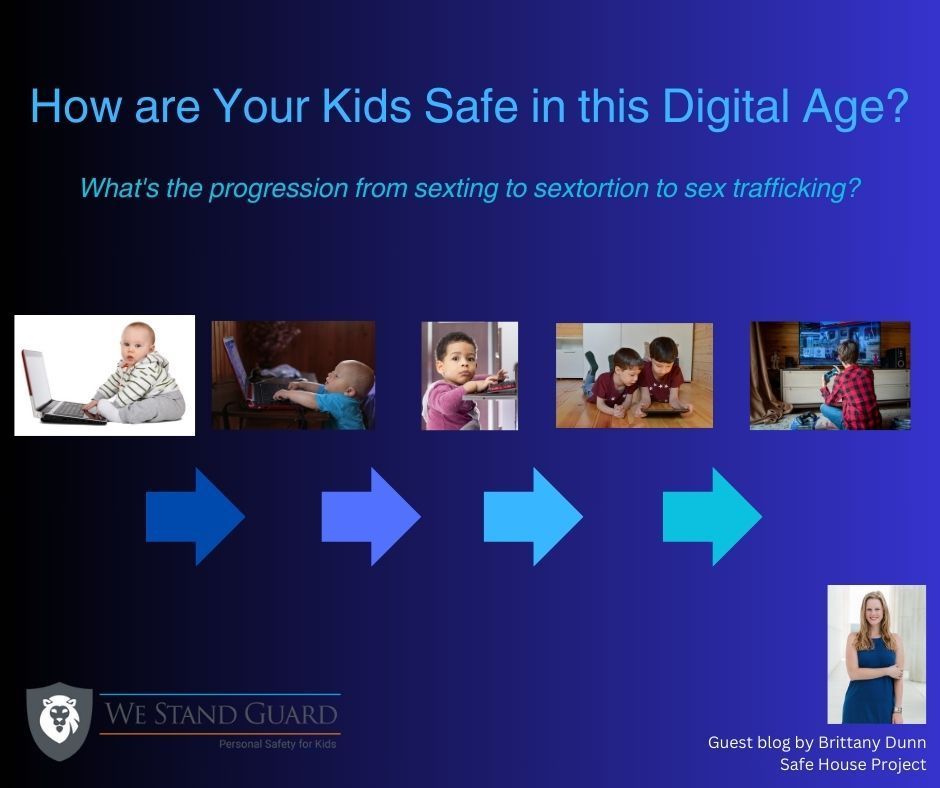
What about the problem of sexting leading to sextortion leading to sex trafficking progression? Possibly, much to chagrin of many people recently watching the Sound of Freedom movie, these very real risks do not only happen overseas or far flung parts of the Earth. Sadly, the USA runs rampant with these atrocities, often leading the way in the consumption of it all.
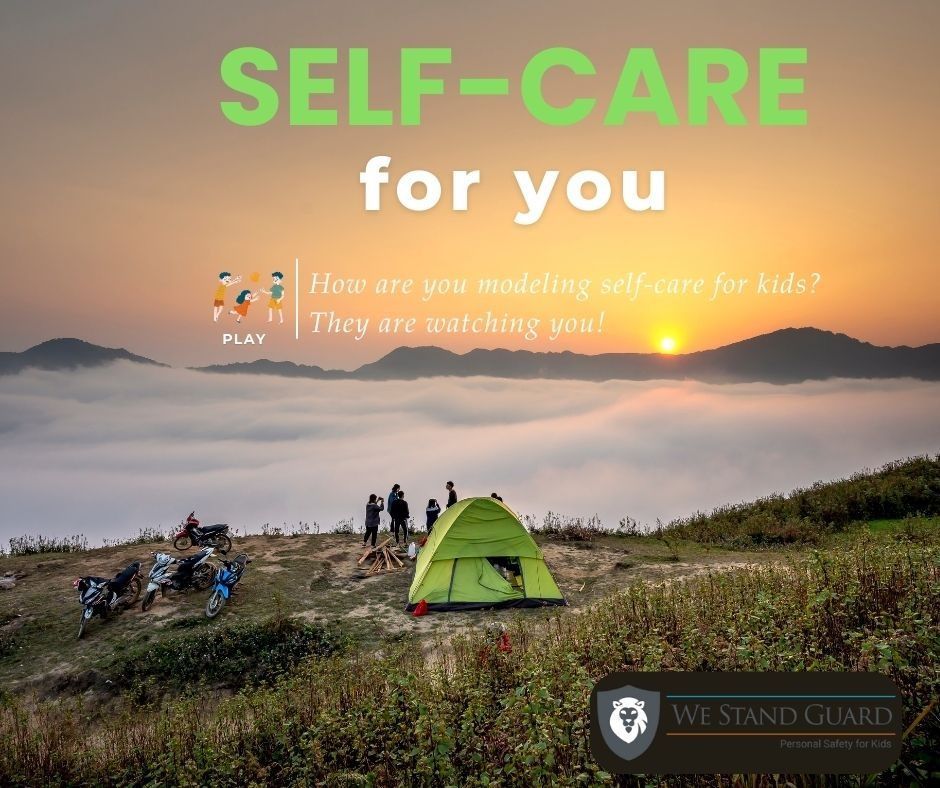
What challenges or gaps are you facing as the kids are growing up, which brings change as they transition from childhood to tweeners and teenagers. In addition to last month's blog on A Look at Self-Care Activities for Kids , here is an interesting look at your own self-care, especially during transitions with kids growing up. In fact, I visited my triplet nephews this past Labor Day weekend and my brother and I were cracking up since their PJ bottoms were like crop pants - they have grown taller as they begin middle school! Surprise!!! As a follow up to last month, check out Anya Willis' Part 2 guest blog on self-care (see more at https://fitkids.info/ ). Life is a roller coaster of changes, from new jobs and relationships to relocations and even crises. As disorienting as these major life transitions can be, they also offer a unique opportunity to reboot your habits and improve your overall well-being. Today, we will provide you with strategies to embrace these transformations and convert life's challenges into stepping stones for a better you, Turning Anxiety into Calm It's natural for stress levels to peak during transitions. However, these moments provide a chance to develop effective stress-management strategies . Start with acknowledging the stressors. Once you identify them, use mindfulness exercises, such as deep breathing or meditation, to mitigate their impact. Incorporating physical activity can also make a significant difference. Exercise releases endorphins, which naturally reduces stress. So, the next time you find yourself overwhelmed, remember to take a step back and focus on your well-being. Go Back to School Returning to school is one of the best ways to revitalize your life and open doors in terms of a future career. There are plenty of options out there, as well. For instance, if you’ve ever thought about pursuing an online bachelor's degree in nursing , now is the time. Online nurses are in high demand, and if you’re open to the flexibility that comes with internet-based learning platforms, you can work toward your degree on your own schedule, from the comfort of your own home. From Concept to Logo Major life transitions can also offer the ideal moment to venture into entrepreneurship. Begin with research. Understand your target market, potential challenges, and financial requirements. Once you have a comprehensive plan, move to the execution phase. When it comes to establishing a brand identity , create a memorable image using free online logo makers. These platforms offer an array of customizable designs to give your business a professional edge, and a well-designed logo can do wonders for brand recognition. Fostering Consistency Adjusting to a new chapter in life often requires a revamped routine. Consistency is the cornerstone of habit formation , and the best way to ensure this is by designing a daily routine that aligns with your newfound goals. This can be anything from a workout schedule to set times for personal and professional growth. Not only does this help in maintaining a balanced life, but it also solidifies the positive changes you aim to make. Legal and Financial Control through an LLC If you opt for the entrepreneurial route, forming an LLC ( limited liability company ) is crucial. This legal structure provides personal liability protection and offers several tax benefits. It signifies a critical step towards becoming your own boss, putting you in control of your business and, by extension, your destiny. Consider consulting professionals to help you navigate the complexities of forming an LLC. Balance Your Caffeine Intake For many, caffeine is a daily necessity. However, it's easy to go overboard, especially during stressful periods. If you must drink caffeine, take the time to learn more about the different coffee drinks available. Whether it's opting for a lighter roast or mixing in decaf, these choices can help you maintain energy levels without sacrificing sleep quality. Improve Your Social Circle Relationships play a crucial role during transitional phases. This is an ideal time to assess your social circle and make necessary adjustments. If certain relationships are toxic, it’s time to distance yourself. Surrounding yourself with positive, supportive individuals can significantly boost your emotional and psychological well-being. Repair Your Credit Transitions often have financial implications. Use this time to review your credit report and take steps to fix any inconsistencies or debts. By managing your finances effectively, you lessen stress and lay the foundation for a stable future. Goals with a Purpose: Mapping Your Journey Setting clearly defined goals that resonate with your core values is fundamental. They act as a roadmap, guiding you through challenges and keeping you centered. A detailed, step-by-step plan can greatly assist in achieving these goals, and the focus it brings can be an invaluable asset. The experience of undergoing a significant life transition can be exhilarating, daunting, and enriching all at once. Embracing these transitional phases with purposeful strategies can redefine challenges as opportunities for personal and professional growth. By applying the practices highlighted in this article, you're poised to emerge stronger, more empowered, and ready to seize future opportunities with aplomb.

